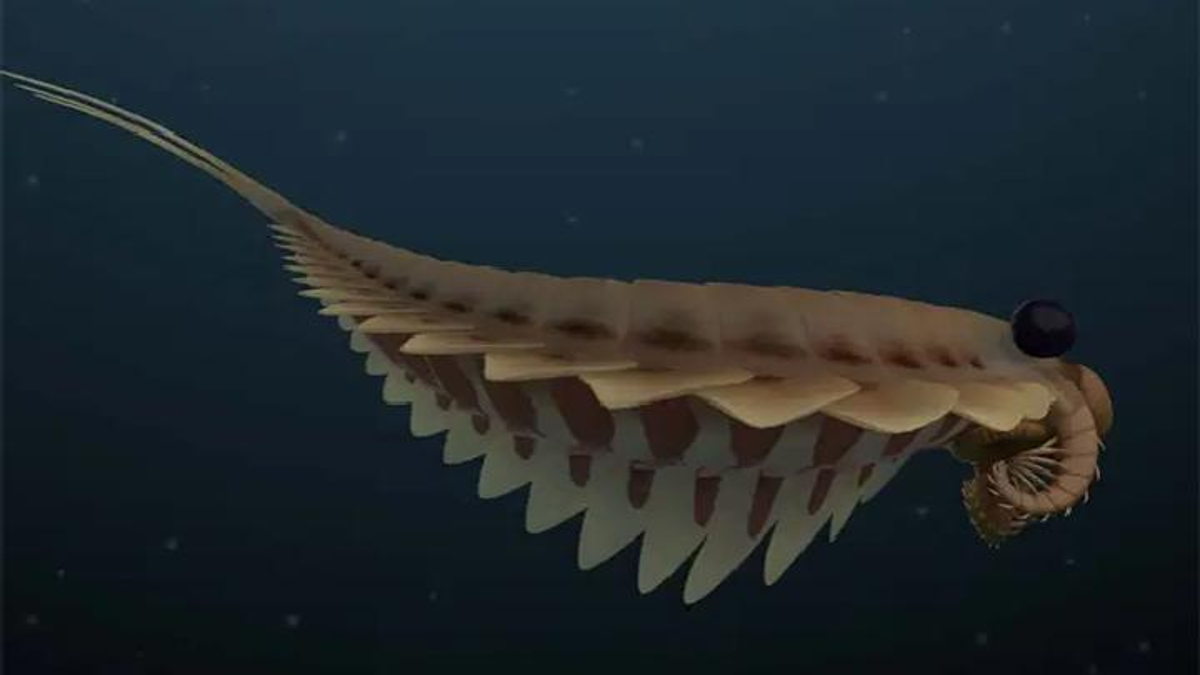Three-eyed marine animal fossils hundreds of millions of years old managed to surprise scientists because they are so perfectly preserved.
Animals that have three eyes have fins that are similar to the wings of birds. It is possible that these animals had roamed the shallow seas about 500 million years ago, in the Cambra period.
Even though it is hundreds of millions of years old, in fact the fossils of this animal are still very well preserved.
Also Read: Marine Animal Fossil Gnathomortis Stadtmani, Predator Ruler of the Ocean
Discovery of Three Eyes Marine Animal Fossil
Scientists have found the fossil of a predatory animal that has three eyes with wing-like fins in the ocean. The animal was then named Stanleycari Hirpex or S. hirpex.
Scientists suspect that these animals lived in the Cambrian period. S. hirpex also became the first animal with three eyes in the arthropod group containing insects, crustaceans, and arachnids.
S. hirpex is about the size of a human hand. This animal has two protruding eyes on the left and right and a much larger third eye in the middle.
The scientist involved in the research, Joseph Moysiuk of the University of Toronto, Canada explained that S. hirpex may have a very sophisticated visual system.
The visual system works to chase prey and move fast.
Moysiuk and his colleagues recently investigated hundreds of well-preserved S. hirpex fossils. This fossil was excavated from the Cambrian Burgess Shale, Canadian Rockies of British Columbia.
Because they are well preserved, as many as 268 specimens of them even have intact soft tissue, including nerves, brain, and reflective material in their visual system.
Also Read: 160 Years Old Ichthyosaurus Marine Reptile Fossil Reconstructed
Including Ferocious Animals
Research says that these three-eyed marine animal fossils are quite vicious. S. hirpex has 17 body segments with a hard part in the lower third of the body.
The fins of S. hirpex are shaped like wings. Most likely the fossil of this animal is more than 506 million years old.
According to Moysiuk, the visual system in S. hirpex is useful for catching prey quickly. They have a complex sensor system with eyeballs with different tasks.
The discovery of S. hirpex fossils is like looking at the evolution of predatory nations. “It’s like we’re seeing the evolution of the first predatory races,” Moysiuk said.
There are two pairs of tails of S. hirpex which are stiff and hard. Not only that, they also have sharp claws that can scratch their prey and a mouth with jagged jaws.
Moysiuk also suspected that one large central eye with a combination of two lateral eyes was a common feature of early invertebrates.
Also Read: Cretapsara Athanata Crab Fossil Preserved In Amber
For example, the 520 million year old Lyrarapax has a S. hirpex-like structure on the forehead that is most likely the eyeball.
The three-eyed marine animal fossil group is named radiodonta. Their typical structure is to have a pair of protruding and elongated eyes, as well as various strangely shaped organs. (R10/HR-Online)
–


